“When I was a little kid, my grandpa told me that a person can only get tattoos in prison. Because he had tattoos himself, I just assumed he’d served hard time. Because I loved the look of tattoos even as a child, the wheels in my little brain began turning, trying to figure out how I could possibly go to prison and get a tattoo without actually committing a crime.
This has always been me: drawn to the fringes, dancing at the edge while desiring at my core to be a good person. Even when I was being told that good people did not live on the edges, that you had to be bad to get there. It took an embarrassingly long time for it to dawn on me that my grandpa had not actually ever been to prison.
I got my first tattoo when I was seventeen, not too long after I was diagnosed with lupus. My dad got a matching one, and we got them in the only place my mom would approve at the time: the bottom of our feet. It was the lupus butterfly and the phrase ‘Fear Not,’ a phrase I clung to during that time of uncertainty when my entire life was being turned upside-down by the onset of chronic, debilitating illness.
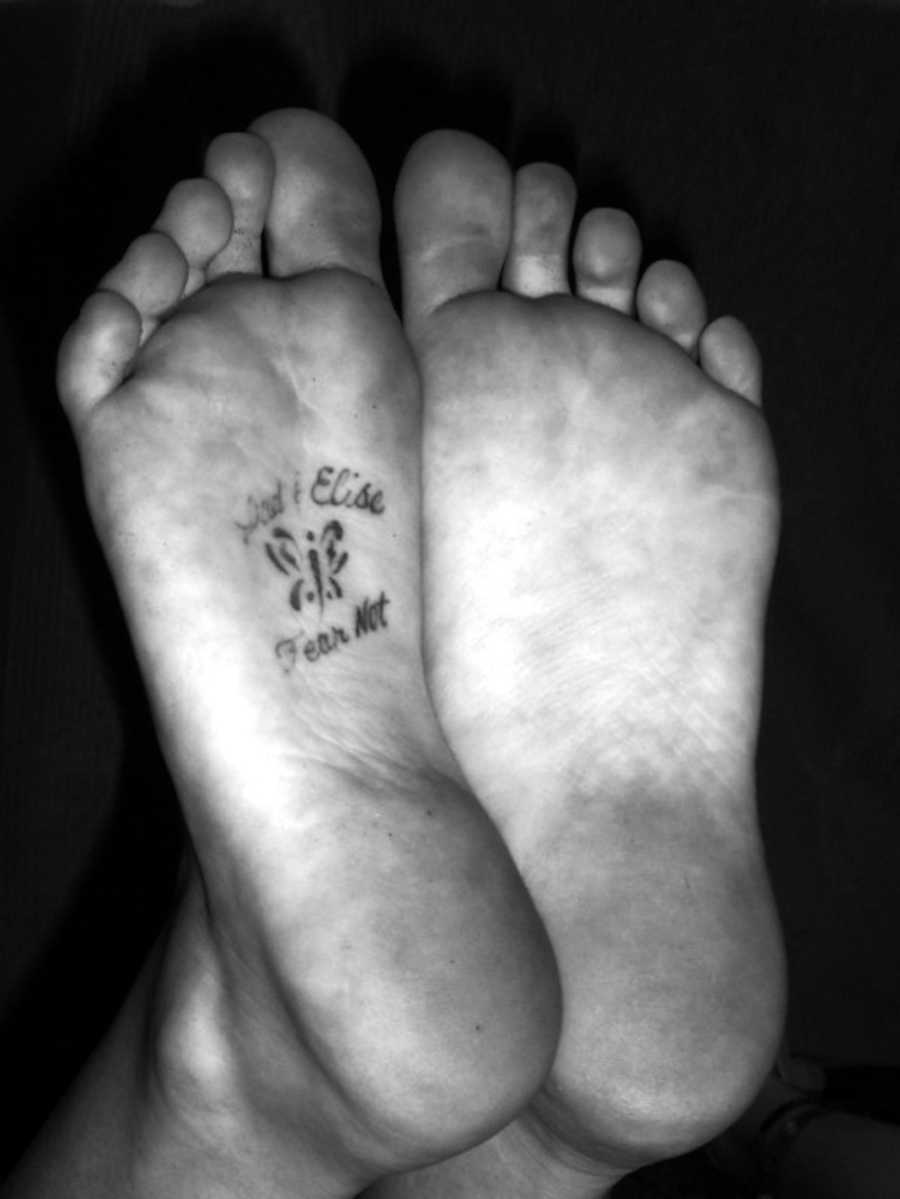
I started keeping journals when I was eight years old. At first, it was on-and-off, but by the time I was eleven, I’d developed consistency. Recordkeeping–the remembering and permanent preservation of my stories, significant or mundane–has been a compulsion of mine since I can remember.
During the couple of years following my lupus diagnosis, I struggled intensely with an eating disorder and self-harm. It was during this time that I got that first tattoo and, with the help of processing with my therapist, I realized a correlation. This time, this process I was going through was more than I had words for. It was monumental in a way I did not know how to process, and my compulsion for recordkeeping found a place in the scars left behind by cutting. They commemorated and paid tribute to what was happening. That tattoo on the bottom of my foot, I realized, did a similar thing.
It would be a few years before I got another tattoo, but in the meantime–even after I had stopped self-harming–I continued to discover how visible body modifications helped me cope with life with chronic illness. I dyed my hair bright colors. On tired days when I couldn’t do much besides watch TV, a colorful flash in the mirror brought sparks of joy.

I pierced my nose. When, for weeks at a time, all I could do was drag myself from my dorm to class and right back again in my sweats, having colorful hair and some extra sparkle helped me feel like I was still expressing my fun, adventurous self somehow–even if I wasn’t able to act fun or be adventurous.
Over time my collection grew, and now I have fourteen tattoos, and eight piercings (besides earlobes).

I know I’m not the only chronically ill person who also struggles with what feels like a chronic loss of identity. Am I still who I was before? Am I still me if I can only act like ‘me’ once in a while? Who am I, other than a chronically ill person, and how will anyone know—how will I even remind myself—when, by necessity, I spend so much time doing…not much?
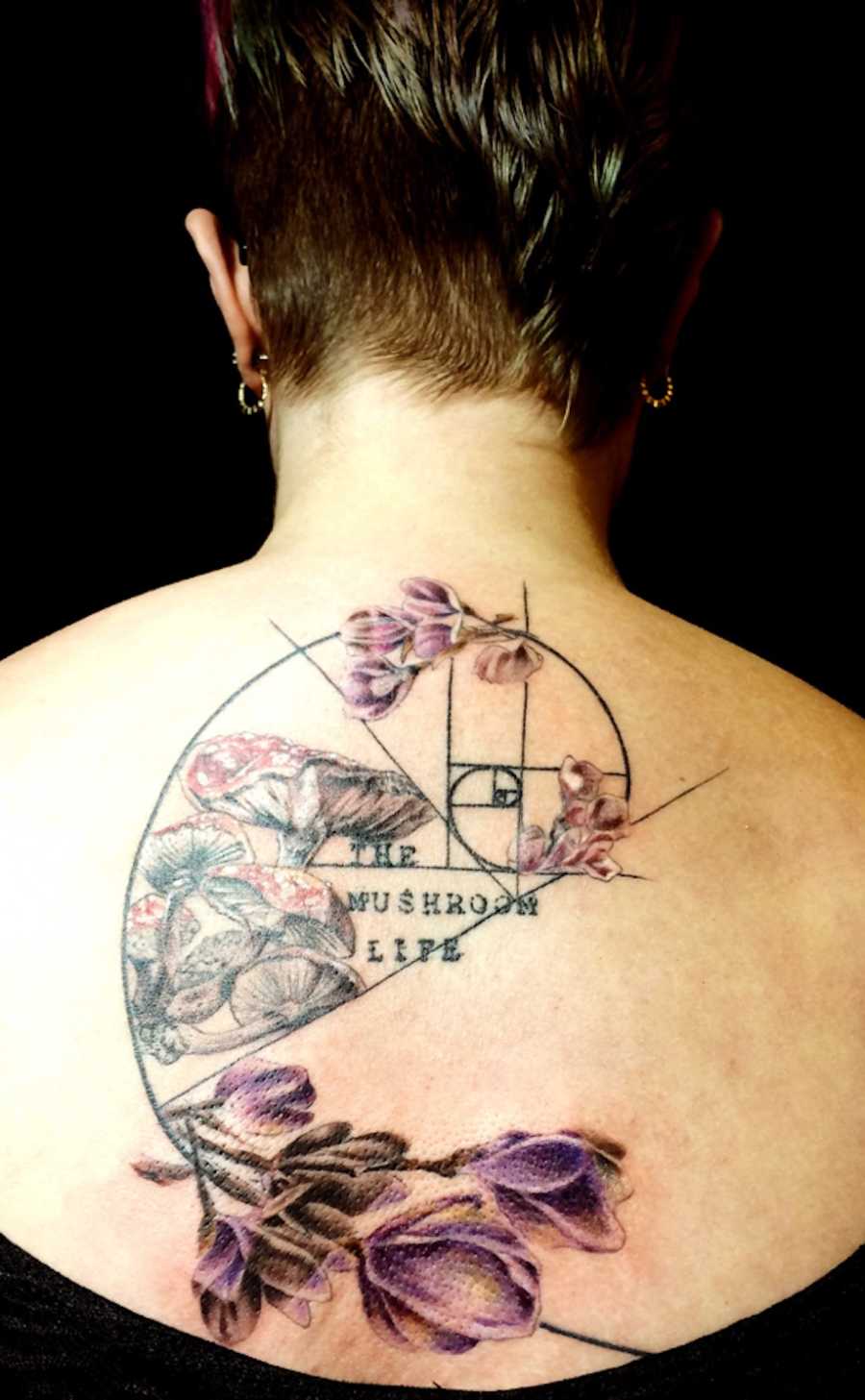
My tattoos are no-maintenance self-expression. They require no extra energy, they don’t make my joints sore fixing or applying. They’re just there, always, no matter how awful I feel. They remind me of who I am, even when I haven’t gotten to live it in a while: adventurous, inquisitive, creative (I design most of my tattoos), bold.
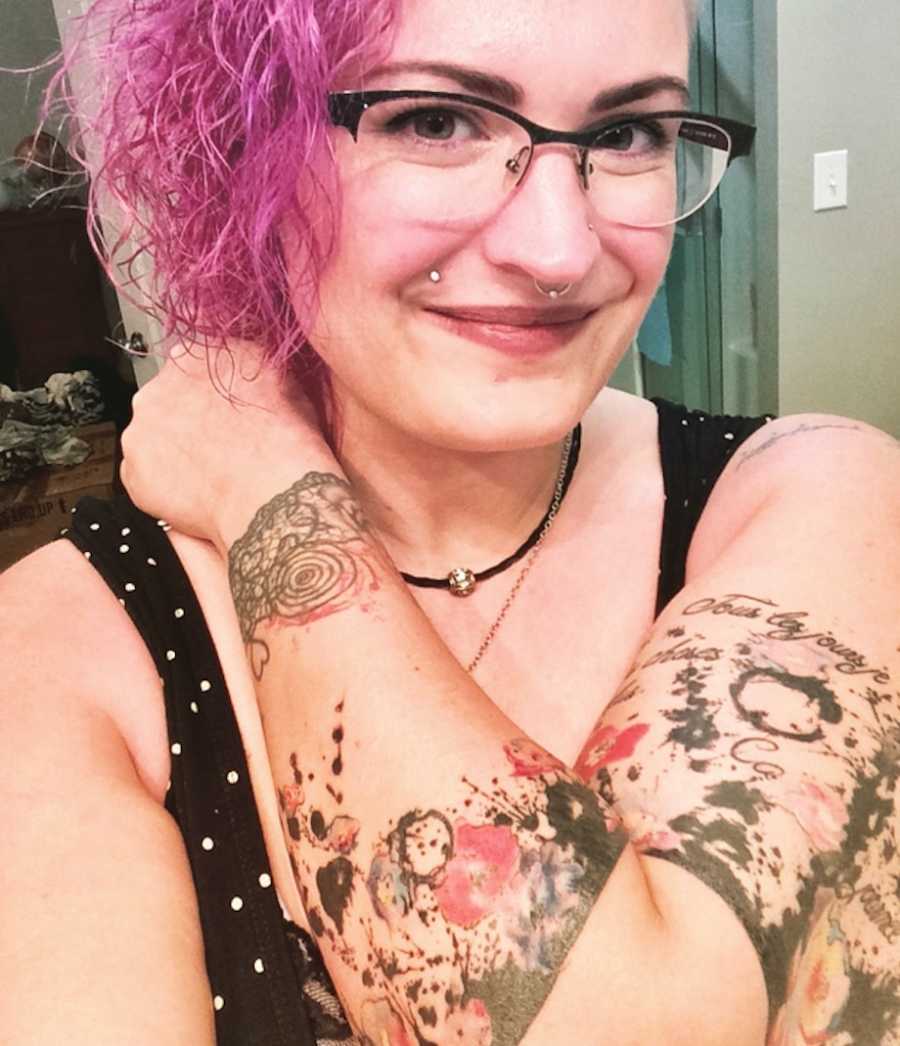
My tattoos have also helped me heal my relationship with my body. It’s been a rough one, and a long road: with chronic illness, eating disorders (that came with body image issues and dysmorphia), gender dysphoria (I am non-binary/genderqueer), and being a sexual assault survivor.

At fifteen years old, my body broke down. It was no longer in my control. I was bedridden. For seven months, my doctors were unable to diagnose what was wrong, and my family and I had a lot of fears. Fourteen years later, while my organ function is stable (for which I am very grateful), my body is still subject to the whims of lupus and fibromyalgia. My energy levels, pain levels, my weight, even the quality of my hair and nails all fluctuate beyond my control.
Many circumstances in my life have left me feeling a disturbing lack of bodily autonomy.
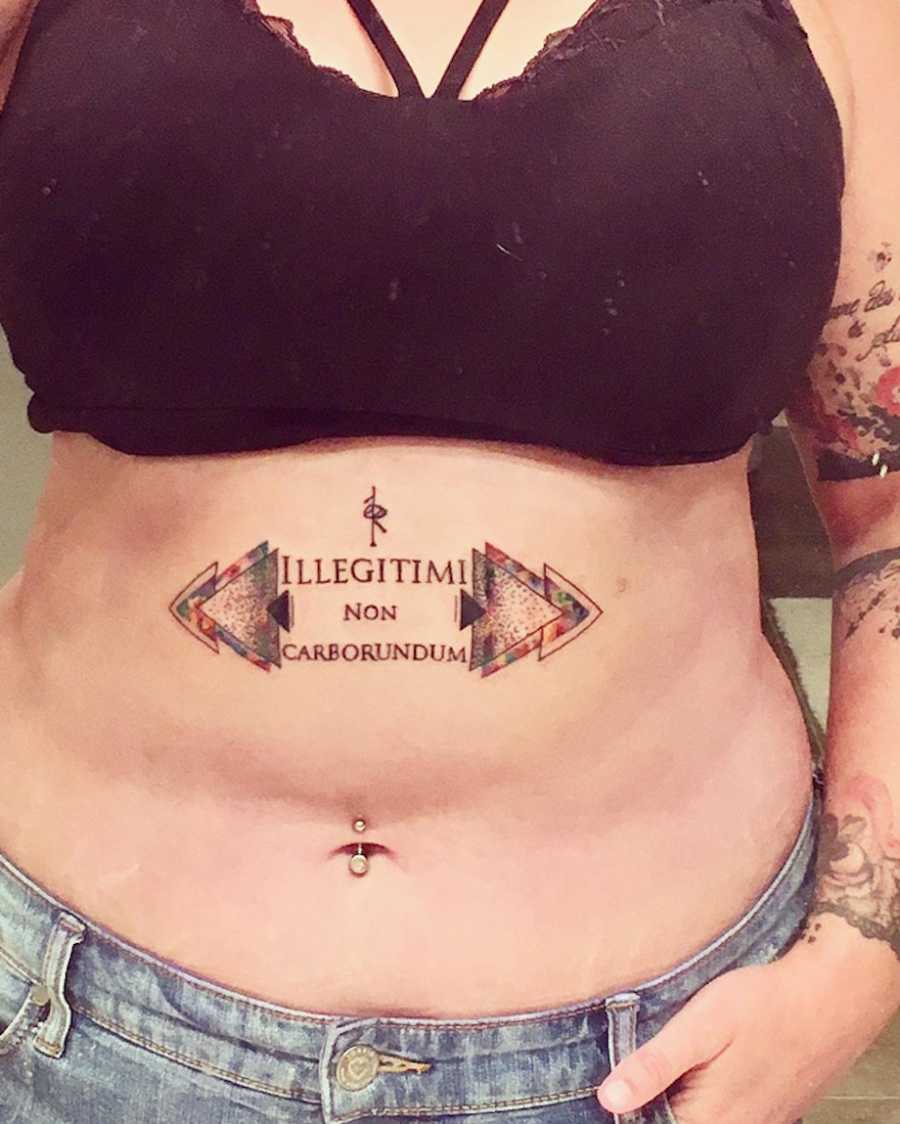
But I can design tattoos for myself that I love, that are meaningful to me, and that will always be there. They are permanent. I find them aesthetically pleasing. They are meaningful to me. They are my decision. They go where I want them. They say what I want them to. They make my body feel like it really is mine, even when I wouldn’t recognize it otherwise. They keep me connected and embodied, even when I would otherwise rather be anywhere but in my own skin.
In so many ways, they help me reclaim myself.
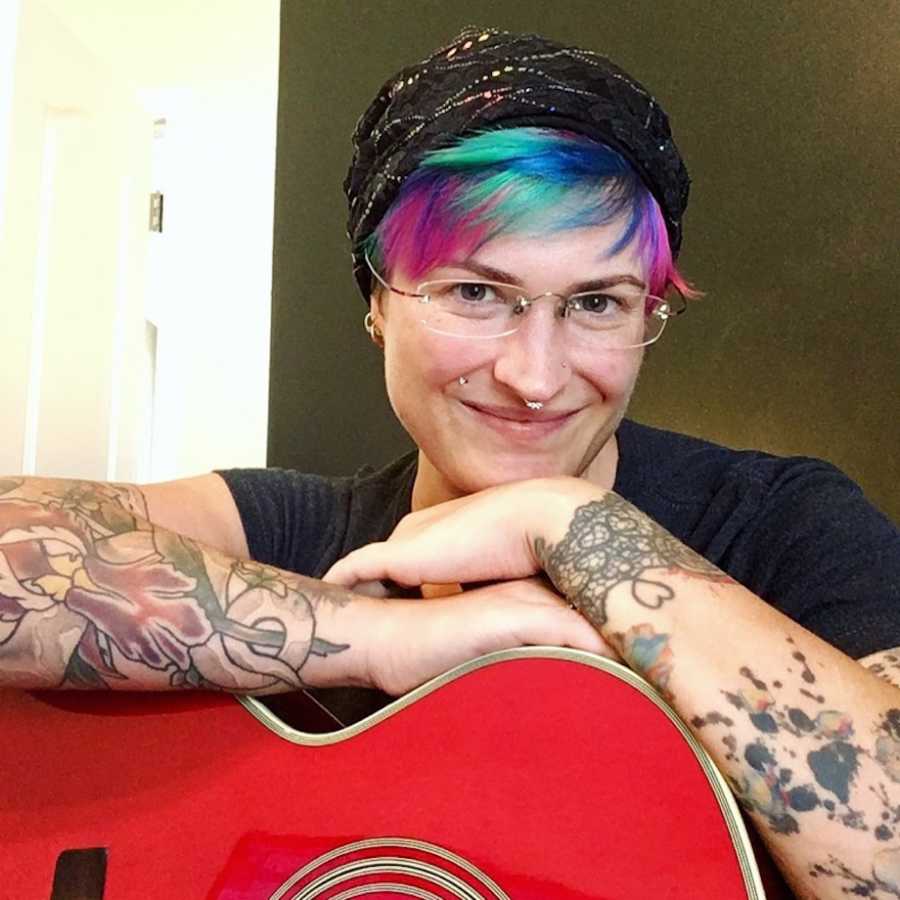
Each tattoo has its own reason, its own story-within-my-story. And each one is a piece of art that I love.

Of course, not everyone finds them as appealing as I do, which is totally fine! No one has to like tattoos, or want them on their own body. But, unsolicited, I have frequently been ‘advised’ on my body art. I’ve been asked (with barely-concealed horror), ‘What will you tell your kids?’ I’ll tell them what my tattoos mean to me, and that when they’re older, they can get tattoos if they want them. I’ll tell them it’s a commitment, and to think hard about what they want. I’ll tell them that all kinds of people have tattoos.
I’ve heard how ugly my tattoos will look when I’m ‘old and wrinkly.’ I roll my eyes at this one. Not only is it rooted in our society’s ageism (that is particularly misogynistic when it comes to looks), it’s simply not true. If tattoos are well-cared-for, they can keep looking amazing on any age of skin.
‘You’re inviting people to judge you.’ Actually no, I’m not. If someone judges me because I have tattoos, it is on their own initiative.
I’ve been told that I’m being irresponsible with my money, by people who have never seen my bank statements or know how I fund my ink or how much I pay for it or what I don’t spend money on in order to save up recreational cash (as if any of that is their business).
‘What if you regret those later?’ Then that will be my problem, won’t it? No need for you to worry!
‘I just think they look trashy.’ The fact that you apply the word ‘trashy’ to human beings says more about you than my tattoos will ever say about me.
‘Can you get a job with those?’ Firstly, none of your business. Secondly, yes.
‘Is it true that tattoos are addictive?’ I honestly don’t know. It probably depends on the person. But asking that of someone with tattoos is about as appropriate as asking someone on their second beer if they’re an alcoholic. You get the idea.
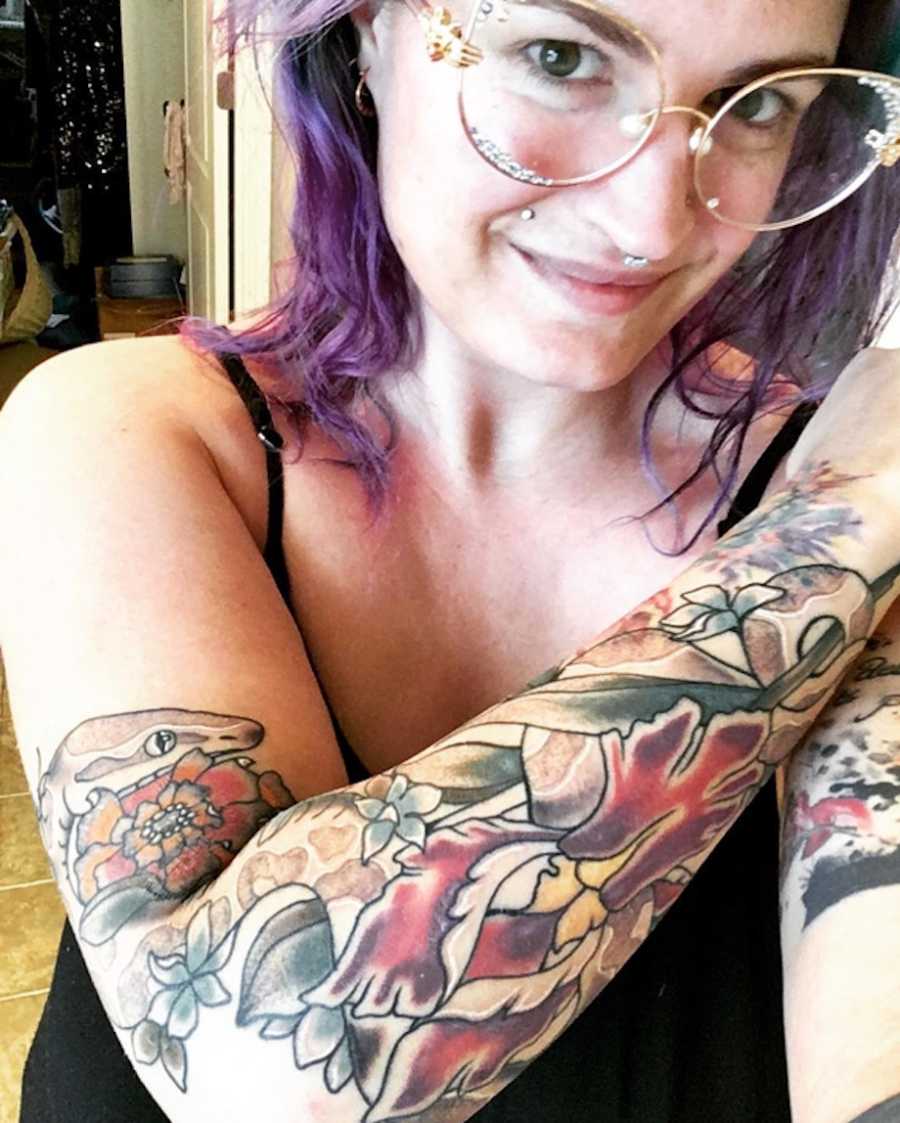
Then there are the people (all of them in my experience have been men) who find my tattoos TOO appealing. ‘Where ELSE are you inked?’ ‘So, you like pain, huh?’ ‘Wanna see MY tattoo?’ Seriously, y’all need some new lines. Or just to be less sleazy.
If you really want to respectfully pursue a romantic interest who has or loves tattoos, I suggest reading Ray Bradbury’s ‘The Illustrated Man’ and Flannery O’Connor’s short story ‘Parker’s Back,’ and using those as jumping-off points for conversation. You’re welcome.
Generally, when commenting on someone’s tattoos, my advice would be: If you don’t have anything nice (and not creepy) to say, don’t say anything at all. And if you have a question, if you wouldn’t ask it about their clothing, jewelry, or children (like ‘How much did it cost?’ ‘Don’t you think you should be done now?’ ‘Don’t you worry that’ll be ugly in 30 years?’ ‘Why would you do that to yourself?’), then don’t ask it about someone’s tattoos, either.
Some tattooed people are totally fine with being asked what their tattoos mean. Some would rather not say. After all, if you’ve read this far, you can see that sometimes tattoos can be very personal. So, if you’re talking to a stranger, personally I’d recommend keeping questions related to the artistry. If the person you’re talking to feels like it, they may very well just go ahead and tell you what their tattoos mean to them. Like I just did. And you didn’t even have to ask!”
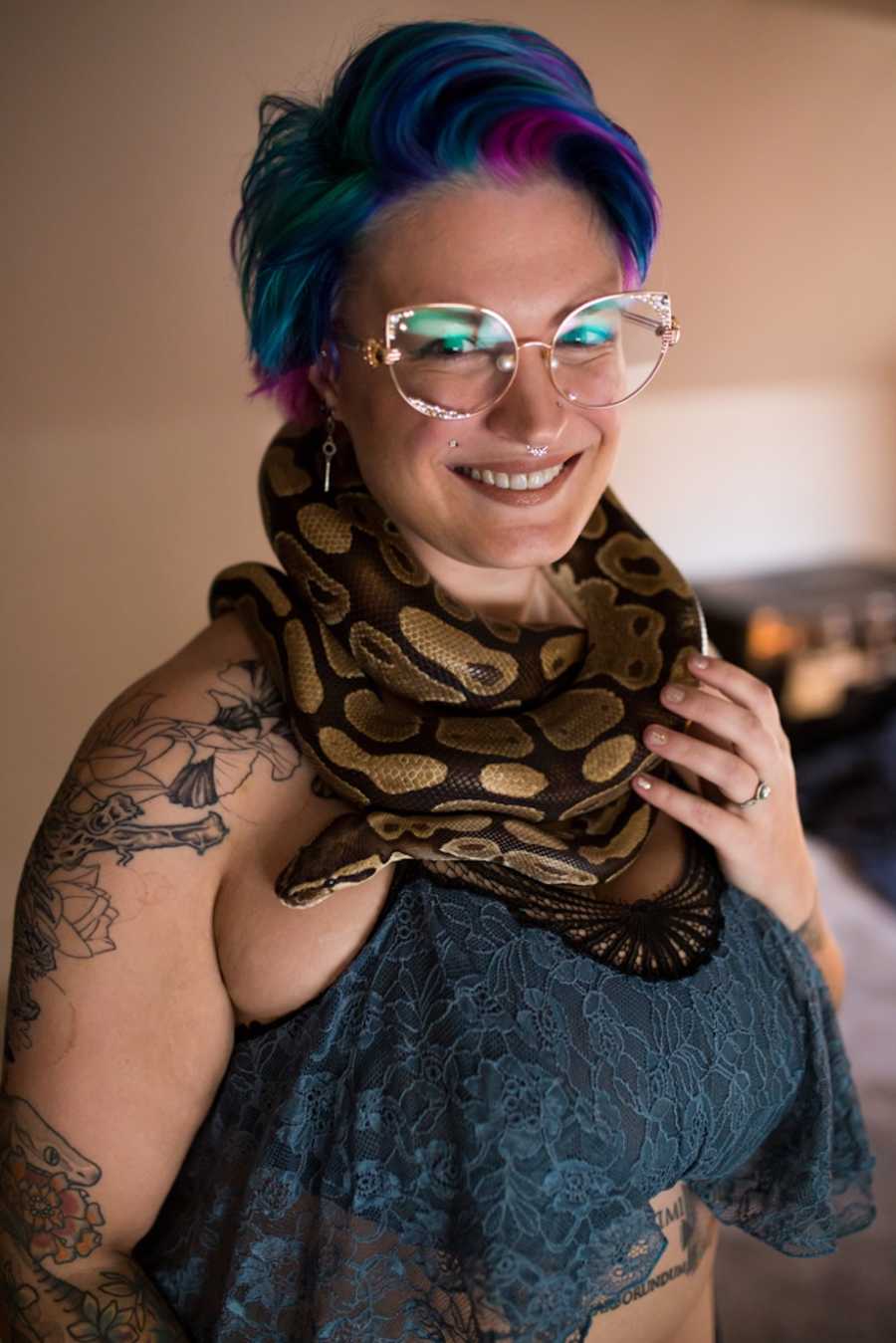
This story was submitted to Love What Matters by Elise Huther. You can follow their journey on Instagram. Learn more about Elise’s art on their website and Facebook. Do you have a similar experience? We’d like to hear your important journey. Submit your own story here. Be sure to subscribe to our free email newsletter for our best stories, and YouTube for our best videos.
Read another powerful piece on tattoo-shaming:
Read Elise’s powerful backstory on their mixed-orientation marriage:
And their struggle with an eating disorder:
Provide hope for someone struggling. SHARE this story on Facebook to let them know a community of support is available.



